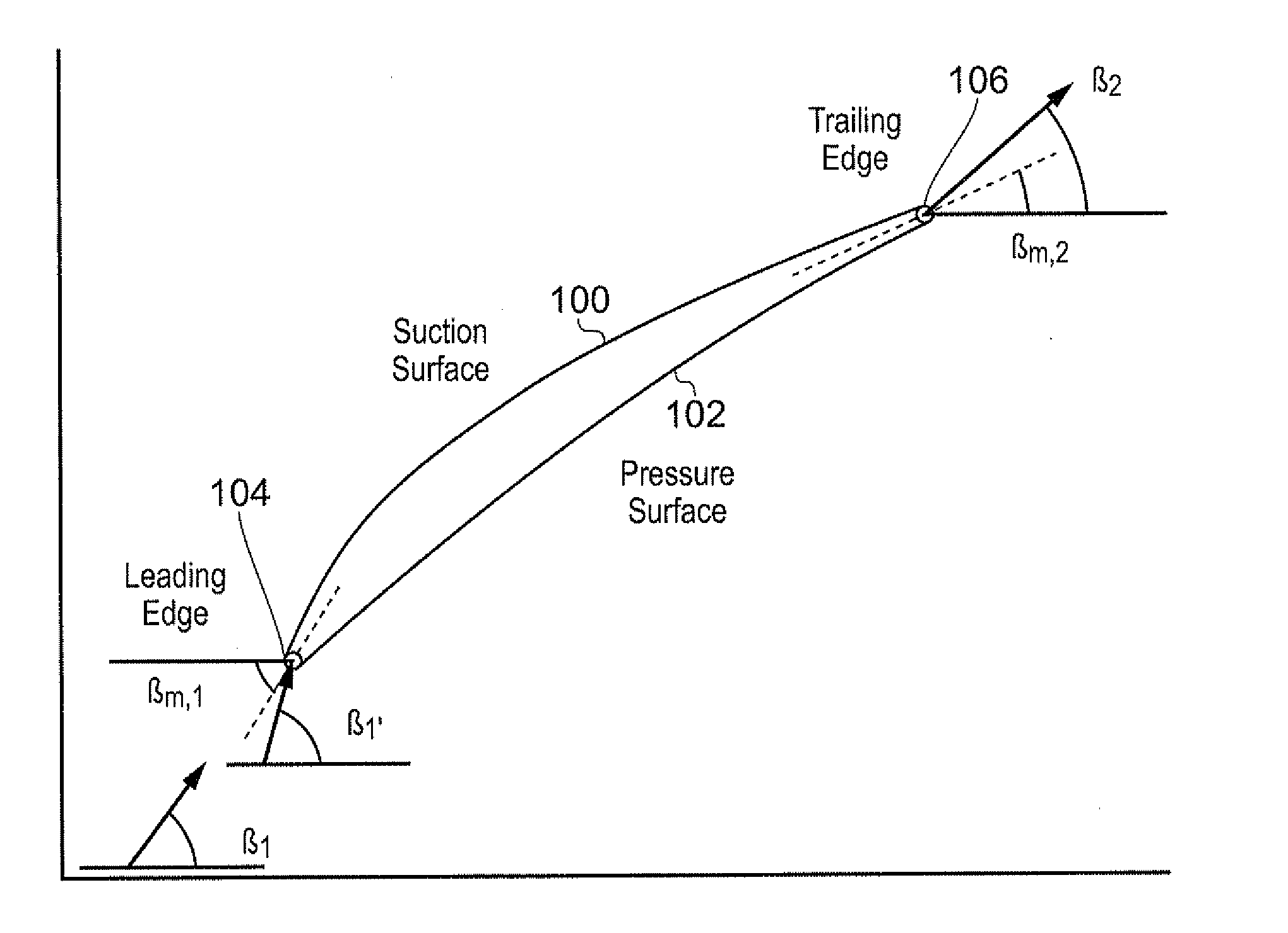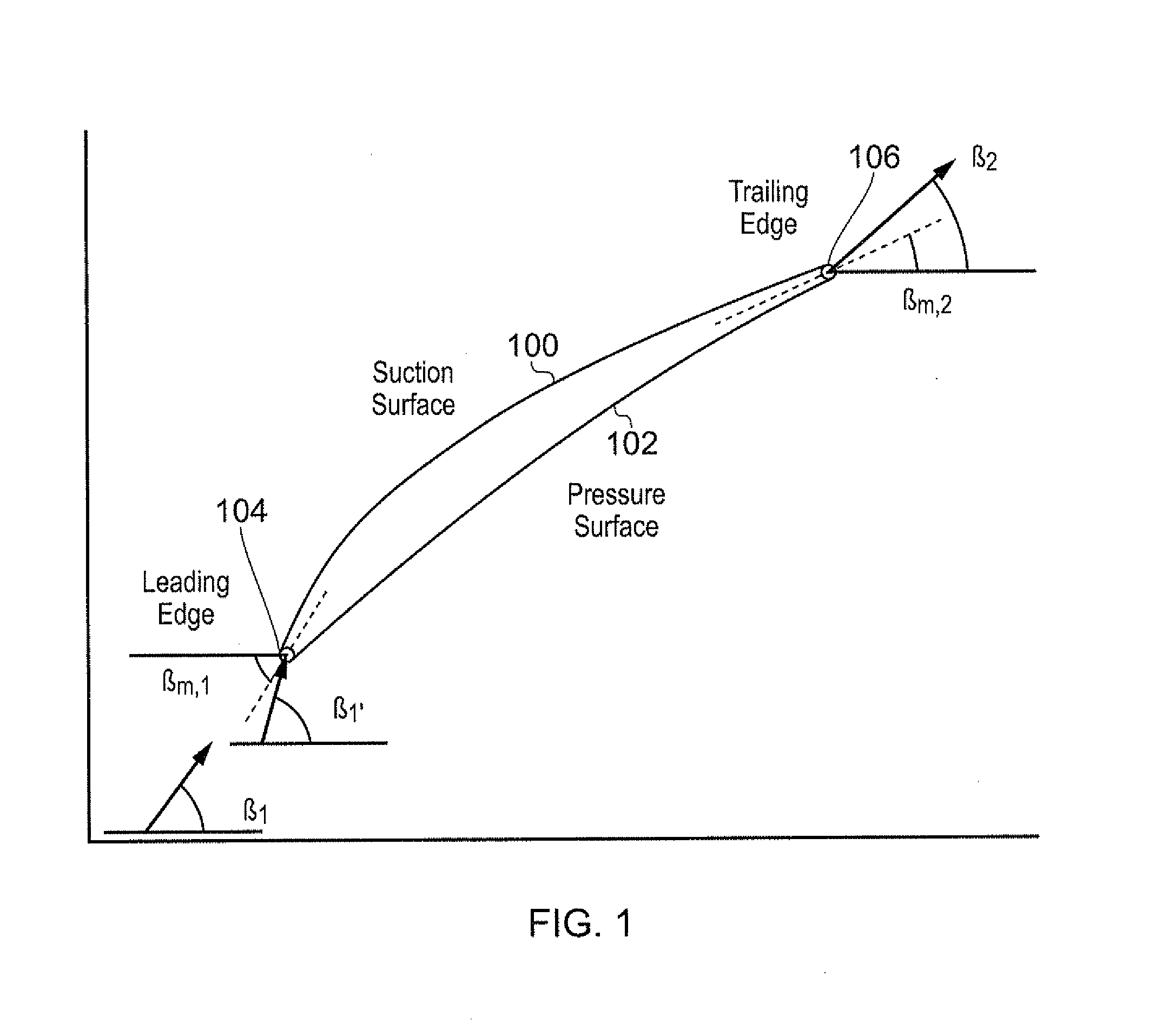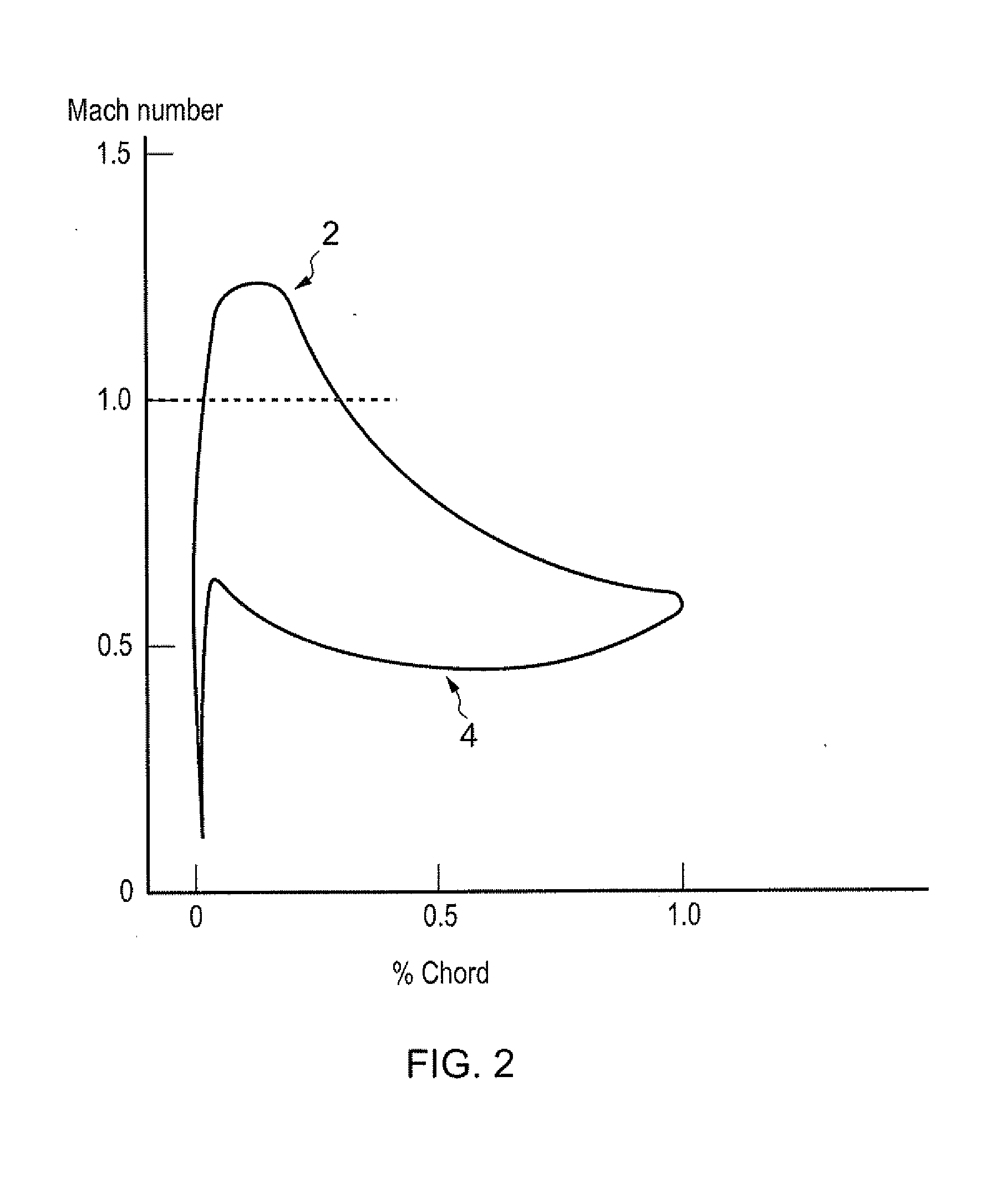Compressor aerofoil
- Summary
- Abstract
- Description
- Claims
- Application Information
AI Technical Summary
Benefits of technology
Problems solved by technology
Method used
Image
Examples
first embodiment
[0076]FIG. 4 shows a low speed research compressor aerofoil and compares a, conventional “datum” aerofoil shape 50 with an aerofoil shape 52 according to the invention. Both aerofoils feature a local maximum 53 of the thickness distribution along the aerofoil chord in the front half of the aerofoil. In the case of a previously-proposed aerofoil, this is the maximum thickness.
[0077]For the first embodiment of this invention there is an additional local maximum in the thickness distribution 54, which is located in the rear half of the aerofoil chord. In the aerofoil shown in FIG. 4 this is located at about 75% chord. This additional thickening may be seen as producing a “bump” in the aerofoil suction surface 56. The pressure surface 58 is without any such “bumps”. A smooth surface is maintained on the suction surface and this embodiment of the invention does not feature a discontinuity in the surface.
[0078]A conventional aerofoil typically has only convex curvature along its suction s...
embodiment 1
[0085]Time varying measurements have been made on both aerofoils and these are shown by plots 64 in FIGS. 6 and 7. The mean shape factors and momentum thicknesses taken from this data are plotted—together with the corresponding maximum and minimum values at these locations which are shown in the form of error bars on the mean. It can be seen that in the unsteady flow environment the boundary layers are thicker than calculated for steady flow. Importantly it can be seen that the boundary layer for embodiment 1 is no thicker at the trailing edge than for the datum aerofoil, thus indicating the aerodynamic loss is no worse.
[0086]Additionally the shape factors near the trailing edge for both aerofoils are lower than those calculated for steady flow. This means that the boundary layers have been made more stable by unsteady effects. For embodiment 1 the shape factor at the trailing edge is about the same as that calculated for the datum. This means that aerofoils can be designed in stead...
embodiment 2
[0098]By offering an increased lift for each aerofoil in the row it is possible to reduce the number of blades in the compressor. In making these changes the blade count of embodiment 2 depicted in FIG. 9 has been reduced by 4.5% relative to a conventional aerofoil, by increasing the lift on each aerofoil in the row.
[0099]The effect on the surface Mach number distribution is shown in FIG. 10 which plots isentropic surface Mach number along the ordinate against fractional perimeter along the abscissa for the two profiles. These curves have been calculated using a steady flow Computational Fluid Dynamics tool at the aerofoil design flow conditions.
[0100]All the extra lift is in the rear part of the aerofoil, from about 63% chord to the trailing edge. Most of this extra lift is on the suction surface, but there is also a small increase in lift at the trailing edge on the pressure surface. The velocity distribution over the front 40% of the suction surface is largely unchanged.
[0101]Thi...
PUM
 Login to View More
Login to View More Abstract
Description
Claims
Application Information
 Login to View More
Login to View More - R&D
- Intellectual Property
- Life Sciences
- Materials
- Tech Scout
- Unparalleled Data Quality
- Higher Quality Content
- 60% Fewer Hallucinations
Browse by: Latest US Patents, China's latest patents, Technical Efficacy Thesaurus, Application Domain, Technology Topic, Popular Technical Reports.
© 2025 PatSnap. All rights reserved.Legal|Privacy policy|Modern Slavery Act Transparency Statement|Sitemap|About US| Contact US: help@patsnap.com



